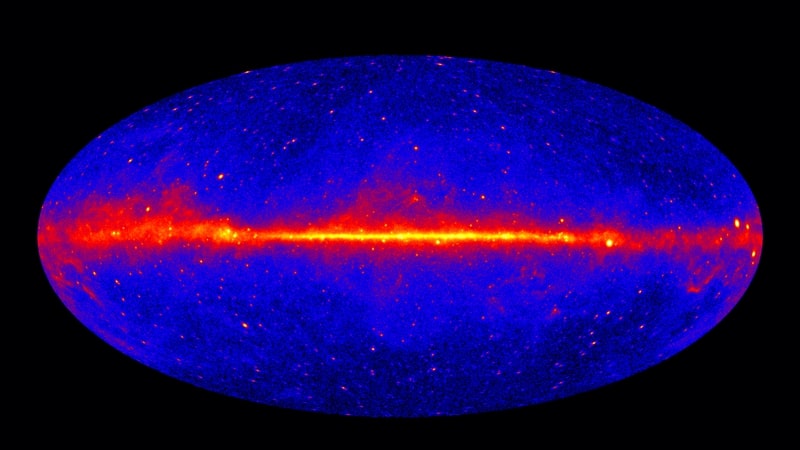
The extragalactic background light (EBL) is an elusive form of radiation that fills the entire universe. Its nature and origin have puzzled scientists for years, but recent studies have shed some light on this fascinating phenomenon.
Understanding the EBL is crucial for our understanding of the history and evolution of the universe and can have implications for a range of fields, from astrophysics to cosmology.
What is the Extragalactic Background Light?
The extragalactic background light (EBL) is a diffuse background radiation that fills the entire universe. It consists of all the radiation that has been emitted by stars and active galactic nuclei throughout cosmic history. All electromagnetic spectrum wavelengths are covered by this radiation, except microwave, which is dominated by the primordial cosmic microwave background (CMB).
The EBL is an important area of research in astronomy and astrophysics because it provides information about the evolution of galaxies and the large-scale structure of the universe. The EBL also plays a crucial role in shaping the spectra of high-energy cosmic rays and gamma rays, which are important for understanding the sources of these particles.
Exploring the Origin and Significance of EBL
In order to fully understand the importance of the extragalactic background light (EBL), we must first explore its origin and significance. The EBL is the cumulative light emitted by all sources outside of our Milky Way galaxy, which includes stars, galaxies, and other celestial bodies. This light has been traveling through the universe for billions of years, providing important clues to the evolution of the cosmos.
The significance of EBL lies in its ability to help us understand the distribution and evolution of galaxies, the formation of the first stars and galaxies, and the expansion of the universe. By studying the EBL, astronomers can gain valuable insights into the history and nature of the universe, allowing us to better understand our place within it.
As we continue to make advancements in our understanding of EBL, we can expect to gain even more knowledge about the origins and evolution of the universe, leading to exciting new discoveries and breakthroughs in the field of astronomy.
How Does EBL Affect Astronomical Observations?
Astronomical observations are greatly impacted by the extragalactic background light (EBL). This is because the EBL is a diffuse glow of light that fills the entire universe, and it can interfere with the detection of faint astronomical objects.
The EBL affects astronomical observations in several ways. For instance, it can scatter light, making it difficult to observe faint objects. It can also add noise to observations, making it harder to distinguish real signals from background noise.
Furthermore, the EBL can absorb light at certain wavelengths, which can distort our understanding of the universe’s composition and evolution. Therefore, understanding the EBL is crucial for accurate astronomical observations and for advancing our knowledge of the universe.
The Impact of EBL on Our Knowledge about Space
EBL has had a significant impact on our understanding of space. By studying the extragalactic background light, we have been able to gain insight into the structure and evolution of the universe.
One of the key ways that EBL has helped us to expand our knowledge of space is by providing clues about the distribution of matter in the universe. By studying the patterns of EBL, scientists have been able to infer the location and characteristics of dark matter, which makes up a large portion of the universe’s mass.
EBL has also allowed us to study the early universe, providing a glimpse into the conditions that existed shortly after the Big Bang. With the latest developments in our understanding of EBL, we are able to explore even further into the mysteries of space.
Conclusion: Why does the Extragalactic Background Light Matter?
The extragalactic background light (EBL) is a crucial element in our understanding of the universe. As we have explored in this article, it is the cumulative light emitted by all the sources outside of our galaxy.
EBL is significant because it provides us with essential information about the formation and evolution of galaxies. This light also allows us to study the universe’s history and its composition, including dark matter.
Moreover, EBL plays a vital role in astronomical observations. It can interfere with telescopes and distort the measurements, and yet, it can also be used as a tool to study distant objects and measure their distances.
Finally, EBL matters because it helps us expand our knowledge and understanding of space and the cosmos, ultimately helping us gain a better understanding of our place in the universe.